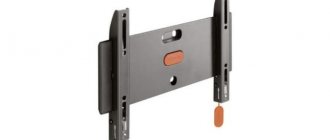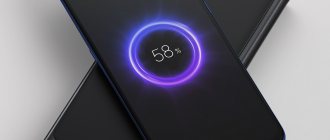The Xiaomi company began to actively conquer the market of Russia and the CIS countries relatively recently; in the year 2021, an active growth in popularity began, and it continued in 2021. At that time, the company already had several good models in the budget segment, as well as above average. In this article we will tell you which is the best Xiaomi phone to buy.
In 2021, the company is on the lips of almost everyone, but when it comes to choosing a Xiaomi smartphone, not everything is so simple. The Chinese company, trying to capture the market of each country, adapts to the consumers of a particular country, because of this there is some confusion regarding smartphone models.
Mi
We are talking about flagships that become owners of the most powerful processors and fast graphics accelerators. The devices are usually equipped with an improved cooling system, which minimizes the likelihood of the “filling” overheating.
Mostly Qualcomm brand products are used as chipsets, and they are the most powerful. The body uses tempered Corning Gorilla Glass, while earlier versions emphasized the use of lightweight metal, most often aluminum.
In the Xiaomi Mi line, attention is paid to the main camera. It consists of at least 3 sensors. It has high resolution, dual LED flash, optical image stabilization and artificial intelligence technology.
Many representatives of the Mi series have an NFC chip, with which you can make contactless payments. And owners of such mobile devices will be among the first to update the MIUI firmware. In 2021, the popular Mi9 model was released, and a year later the Mi10 modification was released. The new product received an updated display with a frequency of 90 Hz, stereo speakers, a more capacious battery (4780 mAh versus 3000 mAh for its predecessor), support for Wi-Fi 6 and Bluetooth v5.1 wireless technologies.
Main lines of Xiaomi smartphones
Despite the apparent variety of assortment, the manufacturer does not have many series:
- Mi is the main division producing the company's flagships
- Redmi is a budget line, it also has quite powerful models
- Poco is a series of affordable flagships that include technological innovations at an attractive price
- Black Shark - cutting-edge smartphones designed for gamers
It is quite difficult to single out the best Xiaomi line among them, since all users have their own preferences. But we will make a small comparison of the listed series, identifying the main differences and advantages of each. Adding to the complexity is the fact that each line has several model ranges, and it is they that often confuse unprepared buyers.
Mi Note
Representatives of this line of Xiaomi phones belong to devices with an average power level. They are equipped with chipsets from MediaTek or Qualcomm, which allow you to play “heavy” gaming applications. However, there is not always room left for future updates.
The advantages include an increased diagonal of the screen module, which exceeds 6 inches, as well as a USB Type-C connector in most modifications. A prerequisite is the presence of a fingerprint scanner, which is mainly located on the back cover. The case is made of a combination of tempered glass and a metal frame, and the colors are pleasantly impressive in variety.
Mi Mix
A special feature of the Mi Mix series phones is the ceramic body, which is complemented by a frame made of aircraft-grade aluminum. Such devices look respectable, they stand out noticeably among premium smartphones.
The developers have equipped them with substantial amounts of RAM, built-in memory, and high-power processors. This makes it possible to use gadgets to play resource-intensive applications, while eliminating the possibility of delays.
Among the advantages, I would like to note the large diagonal of the display module and its high resolution. The picture turns out juicy, contrasty, the brightness is maintained even when exposed to direct sunlight. By the way, Mi Mix 3 became the first slider. A slider design is needed to extend the front camera.
Xiaomi Mi flagship line
The Mi series are flagship gadgets equipped with top-end hardware and supporting the latest technologies. These smartphones have the best cameras and high-quality displays at the time of release. In general, Xiaomi Mi is an expensive device compared to other lines of the brand. The founder of the series was Xiaomi Mi 1, released in 2011. The current flagship today is Mi 11.
The Xiaomi flagship line is designed for the most demanding users. Smartphones have a good reserve of power thanks to top Qualcomm processors, and each model is equipped with an NFC module for contactless payment.
Mi-series smartphones have always stood out for their conservative, but at the same time modern design. Photo: flickr.com
The Mi series is distinguished by high build quality and metal casings, thanks to which these smartphones successfully pass the most stringent crash tests. In terms of design, the company periodically borrows certain features from famous brands (for example, Samsung), but recently it has begun to dictate fashion.
Another important point is that Mi-series gadgets receive firmware updates earlier than others. In addition to the standard model range, there are several branches, which we discuss below.
Xiaomi Mi Note - a line of smartphones for lovers of large displays
It was first introduced in 2015, when the company announced two new products at once - Mi Note and Mi Note Pro. With their help, the manufacturer decided to break into the phablet segment, which traditionally features a larger display diagonal. Also, a mandatory condition for gadgets in this series is the presence of a fingerprint scanner. Another difference is that the smartphone case has a metal frame and a back cover made of tempered glass. Now the Mi Note 10 Lite model, which costs about 30,000 rubles, is quite popular.
Mi Mix - a line of Xiaomi smartphones in a ceramic case
The main feature of these gadgets is a ceramic body and an aircraft-grade aluminum frame. Externally, they stand out even compared to premium smartphones from other manufacturers.
Models in this line are equipped with powerful processors, have a significant amount of RAM and are distinguished by fairly large high-resolution displays. By the way, Mi Mix 3, released in 2021, became Xiaomi's first slider. The unique design hid the dual front camera and made it possible to occupy the entire front surface with a display module without the popular cutouts of that time, popularly called droplets, bangs, codpieces, etc.
The Mi Mix 3 sliding smartphone made a strong impression when it was released in 2018. Photo: cnet.com
Mi Max - models with large screens, but not the best Xiaomi line
The main difference between this Xiaomi line is the increased screen diagonal. When the first generation of these smartphones came out in 2021, it created a significant buzz. At the same time, the characteristics were far from flagship ones (especially the filling), but it was precisely because of the phone’s large display that many buyers became interested in this line.
Mi Max
The difference between Xiaomi Mi Max and representatives of other series is the increased screen diagonal. Its minimum is 6.4 inches, and its maximum reaches 6.9 inches. The back cover is most often made of lightweight aluminum. There is a fingerprint sensor, but the front camera cannot show high resolution.
The devices stand out thanks to an impressive range of wireless technologies. We are talking about Bluetooth, dual-band Wi-Fi 2.4 and 5 GHz, and an infrared sensor for controlling household appliances. High-quality speakers provide stereo sound.
Budget Redmi smartphones
Inexpensive affordable gadgets from Xiaomi are released under the Redmi brand. Redmi smartphones are equipped with not top-end (but not the weakest) hardware. And their main feature is the ratio of technical characteristics and cost that is attractive to buyers.
Within the brand there are 2 lines. In the Redmi Note series, the manufacturer produces budget phones with improved characteristics. Some of them are more expensive than mid-range phones.
The simply “Redmi” series includes classic budget phones and ultra-budget devices (costing from 7,500 to 12,000 rubles).
Redmi Note 10
Xiaomi introduced the line of improved budget phones Redmi Note 10 in March 2021. The body of the base model of the series - the Redmi Note 10 itself - is made of glossy plastic . The back panel of the device is slightly curved, which gives it an elegant appearance. The fingerprint scanner is built into the phone's power button. The device is distinguished by its relatively light weight - 178.8 g. The manufacturer produces 3 colors of the new budget phone: white pebbles, gray onyx and azure (green) lake.
Redmi Note 10
screen diagonal of the device is 6.43 inches (which is slightly smaller than on top models). Monitor resolution - Full HD+ (2400*1080 pixels). The monitor is based on AMOLED matrix.
The smartphone runs on Snapdragon 678 . This chipset has 8 cores with a maximum clock speed of 2.2 GHz. In the AnTuTu benchmark, the budget gadget scores 206,000 points. All modern games (including World of Tanks Blitz and Asphalt 9) on Redmi Note 10 run at maximum graphics settings without freezes or lags.
At the start of sales in Russian retail, phones with a memory configuration of 4/64 GB . In Chinese stores you can also find devices with 4/128 and 6/128GB . If necessary, you can install an additional memory card . Note that the SIM card tray of this device is 3-sectional. You can put one flash drive and 2 SIM cards in it at the same time.
The battery capacity of the smartphone is quite solid - 5,000 mAh . Without recharging, the phone lasts up to 2 days. This device has fast charging function Its power is 33 W. In half an hour, the smartphone charges up to 60%. Charging time to 100% is 1.5 hours. The corresponding power supply is included in the kit.
The rear camera of the state employee has 4 modules . The main photo module takes pictures with a resolution of up to 48 megapixels . In addition to this, the photo unit contains a module for macro photography and an auxiliary module for creating pictures with the bokeh effect. There is also a wide-angle lens with a resolution of 8 megapixels.
The selfie camera on the Redmi Note 10 takes pictures with a resolution of 13 megapixels . It is placed in a neat round cutout in the center of the display.
Among other features of the phone, we highlight the presence of stereo speakers, a 3.5 mm jack for connecting headphones and an infrared sensor for controlling household appliances from the phone. An interesting and controversial decision: the developers did not install NFC chip on this device (although the previous version, Redmi Note 9, had one).
The improved version of the budget Xiaomi phone costs from 16,490 rubles .
However, the improved state employee also has even more advanced versions.
Redmi Note 10S
The manufacturer has increased the performance of the Redmi Note 10 modification with the “S” index. This device has a Mediatek Helio G95 . The fee is considered gaming. In AnTuTu, the “esochka” scores 320,000 points. Playing on this device is more pleasant than on the basic version.
In addition, Xiaomi engineers added RAM to the smartphone. Buyers can choose a version with a memory configuration of 6/64 or 6/128 GB .
of the main camera has also changed . Redmi Note 10S takes pictures with a resolution of up to 64 megapixels , the basic version – up to 48 megapixels.
And another significant improvement is that this phone has NFC chip .
costs in Russian retail from 21,990 rubles .
Redmi Note 10T
The manufacturer installed a new display on the modification with the “T” index. The screen diagonal of this phone has increased slightly (up to 6.5 inches ). The frame refresh rate on the monitor is increased - up to 90 Hz . The picture on it will change more smoothly (the display refresh rate on the basic version is 60 Hz). However, instead of the more advanced AMOLED technology, a simpler IPS .
Redmi Note 10T
Experiments with processors also continued. The Redmi Note 10T has another board manufactured by MediaTek - Dimensity 700 . The processor is based on the flagship 7 nm technology. As a result, the device has become more powerful than the basic version.
The modified version also has an NFC chip
And now about the fact that I lost the device. The developers removed the wide-angle module from the photo unit. All that remains is a 48 MP main camera, a macro camera and an auxiliary sensor .
The SIM card tray has become a combined tray . You can put either 2 SIM cards in it, or 1 SIM card and 1 memory card. Instead of 2 stereo speakers, the phone has one . Fast charging on the device has been retained, but its power has been reduced from 33 to 18 W.
And it turned out that Redmi Note 10T is the same POCO M3 Pro, only in a different body. Small differences between these phones lie only in the memory configuration.
In Russian retail, this device costs from 21,990 rubles . It does not support 5G communications . In Chinese online stores, Redmi Note 10T is sold under the name Redmi Note 10 5G. You probably already guessed how it differs from the Russian version.
Redmi Note 10 Pro
And now - about the most advanced model in the line of 10th laptops. Manufacturers have upgraded Redmi Note 10 Pro in literally all respects:
- The back panel of this device is made not of plastic, but of glass .
- screen diagonal size of this smartphone has been brought to the level of premium models ( 6.67 inches). The screen refresh rate has been increased from the standard 60 Hz to 120 Hz.
- The device has a Qualcomm 7-series Snapdragon 732G (like the gaming POCO X3).
- The RAM of the device has been increased to 8 GB (built-in - 128 GB).
- The smartphone was equipped with a flagship camera capable of taking pictures with a resolution of up to 108 megapixels. The resolution of the macro lens has been increased from 2 to 5 megapixels.
- The selfie camera on this phone takes photos with a resolution of 16 megapixels.
- The advanced version has NFC chip for contactless payments.
Redmi Note 10 Pro
All these improvements are reflected in the price of the device. Redmi Note 9 Pro costs 28,990 rubles (like the light version of the flagship).
Redmi 9
Redmi 9 is a classic Xiaomi budget phone. The body of this phone is made of plastic with an original texture that does not leave fingerprints. The fingerprint scanner is located on the back panel of the phone (on advanced versions of the budget phone it is built into the power button). Possible colors of the phone are gray, green and purple.
Redmi 9
screen characteristics of this device are the same as those of the older model: 6.53-inch , Full HD+ (which is rare in this price segment).
Helio G80 board with a maximum clock frequency of up to 2 GHz. In the synthetic AnTuTu test, Redmi 9 scores 202,000 points. The interface on this phone works smoothly, and playing on it is also quite comfortable. It's not easy to find a processor comparable in performance to the Helio G80 on a phone at this price.
The buyer can choose a model with 3/32 or 4/64 GB . In addition, you can install a memory card . There is a separate slot in the tray for a flash drive. You can put 2 SIM cards in the tray at the same time.
The battery capacity on the phone is the same as that of its “big brother” - 5,020 mAh . The device supports 18W fast charging . True, you will have to purchase a charger for fast charging separately ( 10 W charger is included in the kit ). With a standard charger the device will be fully charged in 2 hours, with an 18-watt charger in 1.5.
The camera capabilities of a classic budget camera are more modest than those of an advanced one. The rear camera block of the device consists of 4 modules . The main module shoots with a resolution of 13 megapixels . There is also a wide-angle module (8 megapixels) and an auxiliary one . But manufacturers did not skimp the macro camera Its resolution is 5 megapixels .
The front camera of Redmi 9 shoots with a resolution of 8 megapixels . It is located in the teardrop-shaped cutout at the top of the monitor.
Among other features of the model, we note the presence of NFC, a 3.5 mm jack and an IR sensor for controlling household appliances.
The budget Redmi 9 costs from 10,490 rubles.
The classic state employee has both more advanced and simplified versions.
Redmi 9T
Redmi 9T is an improved budget device. What functions has the manufacturer upgraded?
Redmi 9T
First of all, the phone has increased battery (up to 6,000 mAh ). It is the same as that of the gaming POCO M3.
Secondly, the package includes a 22.5 W charger (you will not need to purchase it for an additional fee).
Thirdly, engineers replaced the smartphone’s processor. Instead of the MediaTek Helio G80, the device has a Snapdragon 662 (same as the POCO M3).
Fourthly, the device can be produced with a memory configuration of 4/128 GB . There is also an option with 4/64 GB . There are no phones with 3GB RAM available.
Fifthly, Redmi 9T is equipped with stereo speakers .
Thus, the powerful budget smartphone Redmi 9T differs from the gaming POCO M3 only in the design of the rear panel, the presence of NFC and wide-angle camera .
Redmi 9T costs from 14,990 rubles .
Redmi 9C
The Redmi 9C model is a simplified budget phone. In order to reduce the cost, the manufacturer lowered screen resolution from Full HD+ to HD+ (1600*720 pixels). The diagonal of the monitor remained unchanged ( 6.53 inches ).
Redmi 9C
Instead of the MediaTek Helio G80, the phone comes with the less powerful Helio G35 . The board's capabilities are enough for trouble-free operation of any non-gaming applications. However, this budget phone cannot be classified as a gaming smartphone. In AnTuTu, the device scores 94,000 points.
The buyer can choose a phone model with a memory configuration of 2/32 or 3/64 GB . You can also install an additional flash drive . The phone tray is convenient - three sections.
battery capacity of the Redmi 9C is almost the same as that of the base version - 5,000 mAh . The phone fast charging .
The rear camera unit of this smartphone consists of two sensors - a main 13 megapixel and an auxiliary (2 megapixel). The other two “eyes” on the block are the flash and the plug. The front camera of the device shoots with a resolution of 5 megapixels.
A striking distinctive feature of this budget phone is the presence of NFC chip for contactless payments. This phone has a mini-jack The device's memory connector is archaic - micro USB . There is no infrared port for controlling household appliances.
The inexpensive Redmi 9C costs from 9,490 rubles .
Redmi 9A
Redmi 9A is the cheapest model in the Xiaomi line. What are its features? This phone does not have a fingerprint scanner (on Redmi 9 and Redmi 9C it is located on the rear panel).
Redmi 9A
The device is powered by a Helio G25 and scores 89,000 points in AnTuTu. You can play “Tanks” on such a phone only at minimum settings. The device has 2 GB of RAM, 32 GB of built-in memory .
one main camera module on this phone (there is no secondary one). It takes pictures with a resolution of 13 megapixels. A cheap smartphone also does not have NFC .
All other characteristics of the smartphone are completely the same as the classic Redmi 9 ( HD+ display with a diagonal of 6.53 inches, a battery with a capacity of 5,000 mAh , etc.).
buy Redmi 9A for 8,490 rubles.
Let us finish listing the lines and series of Xiaomi smartphones here. We hope that after reading this article you have a clearer understanding of how one Xiaomi phone differs from another. And now you can choose the model that best suits your needs.
And on this page you can familiarize yourself with the current promotions and discounts on smartphones offered by leading Russian and Chinese online stores this week. We specifically selected promotions for Chinese-made smartphones ( Xiaomi, Honor, Huawei, Realmi ). But sometimes you come across good deals on Samsung and Apple .
Mi A
The peculiarity of this Xiaomi line is the absence of proprietary MIUI firmware. The devices come with “pure” Android, which has the following advantages:
- High speed of operation due to the absence of third-party applications and services.
- Availability of programs only from Google. Synchronization with Google services is provided.
- Efficiency of receiving updates.
Xiaomi A
The brainchild of Xiaomi and Google based on Mi. De facto, it is a branch of Xiaomi Mi 5, and is sold in China under the name Mi 5X. The main difference between the Chinese and global versions is the firmware.
Current model: Xiaomi A1 (our review) is the company’s only device running on “pure” Android. Google support guaranteed, Oreo already available. Design “for iPhone”, dual camera can be considered as additional advantages. I would venture to call the A1 the cheapest and most balanced Nexus.
Buy Xiaomi A1
Life hack: sometimes you can buy the Chinese version much cheaper. Mi 5X (our review) can be turned into A1, but you can’t do without dancing with a tambourine. In China, only Mi 5X is sold on MIUI or with custom firmware from A1. They are from gray dealers in Russia.
Buy Xiaomi Mi 5X
Redmi
The most budget series, which is equipped with mid-level processors. The latest models can handle games perfectly even at maximum settings, but under heavy loads there is a risk of stuttering and overheating.
Plastic and aluminum are used to make the case, due to which the devices weigh little. Their design is quite modest, in a minimalist style.
The first modifications were supplied with cameras with low resolution, but gradually this figure is increasing, even a depth sensor and PDAF appeared.
What are Xiaomi Redmi?
Xiaomi Redmi is divided into three series: simply Redmi, Redmi Note and Redmi Pro.
Redmi
Classic smartphones with a standard screen size of 5 inches. Unlike the flagship Mi, the Redmi line is more diverse. Here you will find both frankly cheap devices made of plastic and with an entry-level processor, as well as very productive mid-range devices with claims to flagship status.
Xiaomi Redmi 4
At the moment, the fourth generation of Redmi is relevant, represented by four models:
- Redmi 4 is the base model based on Snapdragon 430 with an HD screen. The body is made of metal.
- Redmi 4 Pro is the older version of Redmi 4 with a more powerful Snapdragon 625 processor, Full HD screen and increased memory.
- Redmi 4X is an intermediate option between the basic and older models based on Snapdragon 435. The processor is slightly better than that of Redmi 4, the screen is the same. Versions are available with a memory capacity identical to both the basic and older Redmi 4 models.
- Redmi 4A is an ultra-budget smartphone based on Snapdragon 425 in a polycarbonate body. The ideal entry-level smartphone.
Redmi Note
Redmi Note is a series of 5.5-inch (Full HD, IPS) Xiaomi smartphones.
Xiaomi Redmi Note 4
At the moment, the fourth generation of Redmi Note is relevant, represented by Redmi Note 4 models based on MediaTek Helio X20 and Snapdragon 625.
Redmi Note
An improved version compared to the regular Redmi. It features a powerful chipset, a camera with several sensors, and a solid resolution of the front photo module. In March 2021, Xiaomi held a presentation of Redmi Note 9 Pro, which replaced the Redmi Note 8 Pro released last year. The new product received a display module with a larger diagonal and a more capacious battery.
Mid-price smartphones (up to 40 thousand rubles)
Poco X3 Pro
Performance in Poco X3 Pro, compared to the base model, has been increased by as much as 77%. The gadget was designed specifically for demanding mobile games and complex tasks that require processor power.
Redmi Note 10T
Redmi Note 10T with MediaTek Dimensity 700 chip provides a normal level of performance that does not decrease even under load. The smartphone can handle games, but only with low or medium settings. At the same time, the device does not heat up particularly much.
The device has a 6.5-inch FHD+ panel with 90 Hz. With a 5000 mAh battery, the smartphone can last 178 hours on a single charge. The main camera provides good photo quality. The device has NFC, infrared and a headphone port. It is perfect for those who are not going to play top mobile games and only take the phone for everyday use.
Redmi Note 9 Pro
Redmi Note 9 Pro is one of the most advanced smartphones from the entire Redmi Note line. With this device, Xiaomi has reached a completely new level. It provides a powerful chipset, a decent camera, and a bright high-resolution screen. The phone allows you to play games at maximum settings, and no overheating of the case is noticed.
Mi 10 Lite
Mi 10 is a fairly expensive flagship that some people simply cannot afford. Therefore, Xiaomi decided to release the Lite version of the smartphone with the Qualcomm Snapdragon 765G and 5G gaming chipset. There is a good 48-megapixel camera, an AMOLED screen, and 20 W fast charging. At the same time, the price is much lower.
Mi 10T Lite
Mi 10T Lite with Qualcomm Snapdragon 750G chip is suitable for gamers, because the letter “G” in the name of the processor indicates the presence of technologies to improve the gaming experience. This is one of the cheapest smartphone models with 5G support. There is 33 W fast charging and NFC. For its attractive price and “pleasant” characteristics, the phone can be called one of a kind.
Redmi Note 10 Pro
Redmi Note 10 Pro is the most expensive gadget in this series. Compared to the previous generation, an AMOLED display matrix has appeared with an image refresh rate of 120 Hz. There is NFC, a memory card slot and a headphone port. The camera is equipped with a 108-megapixel sensor. The phone has stereo speakers and support for fast charging. This is an excellent mid-priced smartphone. Its impeccable design deserves special attention.
Poco F3
The Qualcomm Snapdragon 870 processor frequency of the Poco F3 smartphone reaches 3.2 GHz. It will be a godsend for those who value maximum performance in a phone. 5G and NFC supported. Poco F3 is the first in the history of the Poco brand to receive an AMOLED E4 screen with an image refresh rate of 120 Hz, HDR10+ and MEMS motion compensation technology.
The resolution of the triple main camera is 48 megapixels, and the front one is 20 megapixels. Shooting in night mode is possible. The sound is provided by Hi-Res Audio stereo speakers with Dolby Atmos. This is a smartphone close to the flagship model at an adequate price and with decent functionality.
Mi Note 10 Lite
Mi Note 10 Lite has a flagship design with 3D Gorilla Glass 5 on the front and back. One 5260 mAh battery charge is enough for 2-3 days of battery life. There is NFC, infrared and a headphone input. A device with a Snapdragon 730G chip is close to a “sub-flagship” and is suitable for most tasks.
Mi Note 10 and Mi Note 10 Pro
There are almost no differences between Mi Note 10 and Mi Note 10 Pro. The Pro version has a higher frame rate (120 Hz) and is equipped with more memory. The smartphones have a 6.47-inch AMOLED screen, NFC and a universal set of cameras. They are worth paying attention to those who are interested in the 108-megapixel main camera sensor and a well-thought-out image detail system.
Mi 11 Lite and Mi 11i
After the release of the basic smartphone, the Mi 11 line was replenished with several new devices. If the regular Mi 11 is too expensive for you, it's worth taking a look at its more budget versions. Mi 11 Lite has a compact body and simplified screen, camera and charging specifications.
If you still find it difficult to choose between a flagship and its simplified “younger brother,” then the Mi 11i smartphone is suitable for you. It is cheaper than Mi 11, and differs from it only in camera capabilities and charging.
Mi CC Series (Colorful & Creative)
It features a bright and non-standard design, using holography and gradient in the design of the back cover. Mobile devices have an AMOLED display, fingerprint scanners, and excellent processors.
The emphasis is on the high resolution of the main and front cameras. The front camera produces photos of at least 32 megapixels, so selfies are obtained with excellent detail and a wide viewing angle. There are autofocus options, a variety of stylistic filters, etc. Powerful speakers supporting the Hi-Res sound standard are installed.
Flagships
Mi 10 and Mi 10 Pro
Mi 10 and Mi 10 Pro received an AMOLED screen with a diagonal of 6.67 inches and a resolution of 1080 x 2340 pixels. The smartphones are equipped with the same hardware: Qualcomm Snapdragon 865 processor and Adreno 650 graphics system.
Mi 10 Pro is a top-end flagship smartphone with a good set of cameras, fast charging, stereo speakers, Wi-Fi 6 and NFC. If you want something simpler and cheaper, take the basic Mi 10, which is still relevant today.
Mi 10T and Mi 10T Pro
Mi 10T and Mi 10T Pro are smartphones that deserve high praise, because they are equipped with all the necessary functionality for their price. For those who value detailed camera shots and high-quality zoom, the Mi 10T Pro is suitable. For those who just need a good camera, we recommend paying attention to the Mi 10T. Both devices can please you with excellent performance, long battery life and display quality. The only negative is the slippery body, which is quite large in size.
Mi 11 and Mi 11 Pro
Mi 11 and Mi 11 Pro are completely identical in display and processor parameters. The Pro model leads in performance (682,716 points versus 641,145 points). It also has a larger battery, faster charging and powerful sound. Smartphones support Wi-Fi 6, NFC and 5G network. For those who care about sound quality, charging speed, photo and video quality, the Pro version is suitable. If you don't want to overpay for an improved camera and speakers, choose the basic model.
Mi Mix 4
At the time of writing, Mi Mix 4 is the newest smartphone presented by Xiaomi. Loyal fans have been waiting for updates in the Mi Mix line for 3 years. The mobile device received a 120 Hz Dolby Vision screen, Harman Kardon speakers, 5G and Wi-Fi 6. Among the innovations in the new product, it is worth noting the Snapdragon 888+ processor and support for fast wired 120 W and 50 W wireless charging.
The 108 MP camera has a new generation Samsung ISOCELL Bright HMX sensor. At the same time, many are not indifferent to the under-screen front camera: some call it a technological breakthrough, while others consider this technology unnecessary. Mi Mix is suitable for those users who want to own the most technologically advanced product with a nice design at an affordable price.
Mi 11 Ultra
Mi 11 Ultra can rightfully be considered the best smartphone from Xiaomi in 2021. At the same time, this is one of the most expensive devices of the Chinese brand. The flagship has a triple camera, Snapdragon 888 chip and a liquid-phase cooling system.
The main feature of the gadget is a small screen next to the rear camera: it shows the time, incoming calls and helps you take selfies with the main camera. Even the main competitors of the smartphone on the market (iPhone 12 Pro Max and Samsung Galaxy S21 Ultra) offer a smaller set of functions at a higher cost. If you are in search of an uber-flagship that will serve you faithfully, and not try to “extract” the last money from you, then we recommend taking a closer look at the Mi 11 Ultra.
Mi Mix Fold
Mi Mix Fold is the first foldable flagship from Xiaomi. The diagonal of its AMOLED screen when folded is 6.52 inches, and when unfolded it is 8.01 inches. The smartphone turns into a real portable computer, which is universal in its use. Yes, it is slightly inferior to competitors on the market in some respects, but at the same time it is much cheaper. For its price, this is an excellent chance to try out modern innovative technologies yourself.
Black Shark
A gaming series of Xiaomi phones that is aimed at gamers. It is possible to mount the gamepad on both sides.
The advantages include modern hardware, a liquid cooling system with an increased area, a battery with a solid reserve capacity and powerful charging.
The design of Black Shark smartphones is non-standard. It focuses on a futuristic look, clear chopped lines and cool shades.
One of the brightest representatives of the line is Black Shark 2, which was released in 2021. At the beginning of 2021, the third version was presented with a larger display diagonal and a more powerful chipset. The dual camera has been replaced with a triple high-resolution photo module, and retractable mechanical triggers and magnetic charging mounts have appeared on the body.
Features of the MiPad line
It is easier to make comparisons between Xiaomi tablets - there are only three models. The Xiaomi Mi Pad was a trial version to see if the tablet would be as popular as smartphones. It turned out that everything was in perfect order, and therefore the Chinese launched Xiaomi Mi Pad 2, starting with which they firmly established themselves in this niche in the market.
The differences between the first and second models are noticeable to the naked eye. The body of the “two” is made of metal, not polycarbonate, the RAM is already 2 GB, and you can choose between Android and Windows 10 as an operating system.
Xiaomi Mi Pad 3 has gone even further - here you can already choose between two main configurations that differ in the amount of built-in and operating memory: 3 GB of RAM with 64 GB of built-in or 4 GB of RAM with 128 GB of built-in. The chipset has also been improved in comparison with the more budget “two” - instead of the Intel Atom X5-Z8500, the Intel Atom X7-Z8700 appeared.
When releasing the Xiaomi Mi Pad 4, the developers focused on the “powerful processor” Qualcomm Snapdragon 660. The updated Mi Pad 4 abandoned experiments with Windows 10 and DualBoot, continuing the traditional line of Android-based tablet computers.
Pocophone
The advantage of Poco is the combination of flagship hardware, a capacious battery and an affordable price. The devices come with large screens (from 6.4 inches), high-quality cameras with several sensors.
The line was launched in 2021 with the release of Pocophone F1. In 2020, Xiaomi introduced the Poco X2 version, which became the owner of a display with a larger diagonal and resolution, a more powerful chipset, a main camera with 4 sensors and a front camera with a dual photo module. The changes also affected the battery, the capacity of which increased by 500 mAh and reached 4500 mAh.
Gradually, the lines between Xiaomi smartphone lines are blurring, as developers strive to constantly improve technical characteristics. It is possible that soon gadgets will be divided into only 3 categories: budget, mid-range, premium.
The best Xiaomi phone - it's time to get to know it!
Xiaomi offers a variety of phones, ranging from lower price ranges for less demanding ones to models with durable components and extensive functionality. The manufacturer used a clear separation of its devices . The company's flagship products belong to the MI family. The Note series smartphones are the larger screen variants. Meanwhile, the mid-range phones are called Redmi. Moreover, Redmi currently functions as a sub-brand of Xiaomi, although in Russia you will still find these models under the same manufacturer's name.
Xiaomi produces various devices, but today we will take a closer look at the most popular Xiaomi products - phones. The rating takes into account options for this brand from each price range . Xiaomi smartphones are distinguished by their excellent price-quality ratio and the use of innovative solutions, and not only in the case of flagships. Even in budget options, you'll find 5G, a high-end camera set, or a powerful 8-core processor. The company is certainly distinguished by its original design and attention to detail.











